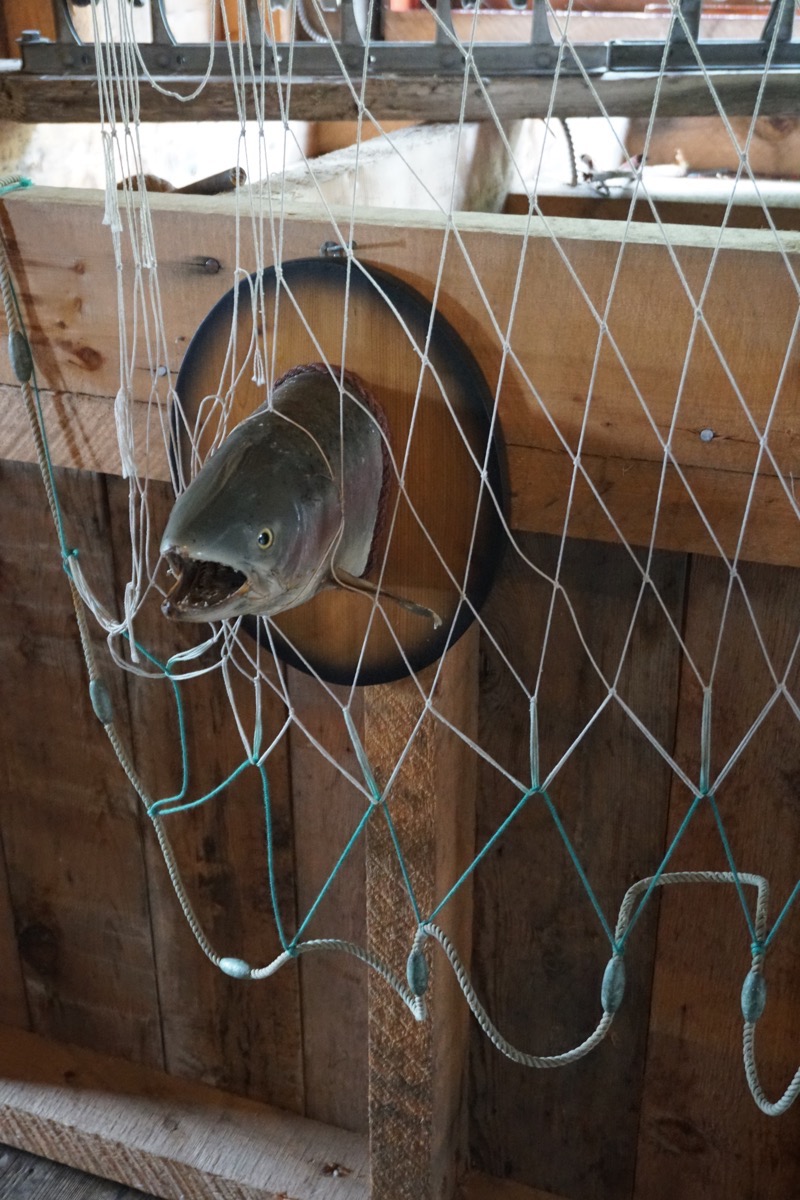Days 66-67 - Prince Rupert, BC
The most disappointing place on this whole trip has been Prince Rupert, BC. It rains 240 days a year and we happened to hit two of those days while spending our two days here. Temperatures were in the upper 50’a and it was dreary. That wouldn’t have been so bad if we hadn’t driven 150 miles out of way (300 round trip) to see it. 

On our way down highway 16 we saw beautiful wild flowers on the side of the road and magnificent mountain peaks. The train tracks run parallel to the highway and we passed a train that was 201 cars long with 90 of those cars carrying double containers. It was chosen in 1905 as the terminus for Canada’s second transcontinental railroad.

Prince Rupert is known as the “Gateway to Alaska.” It’s the second major deep-sea port on Canada’s west coast, exporting wood, coal, grain and other resources to Asia and Europe. For those Alaskan bound travelers who chose to take the ferry up from Bellingham, WA, it’s the second stop after Vancouver. We met some people who took the ferry as far as Whittier from Bellingham and they paid $7,800: per person cost, a room on the ferry to sleep in, the cost for the car and the cost for the RV (vehicles are charged per foot). Additional charges apply it you want to get off the ferry at a stop and then get back on several days later. Plus, of course, the cost of your food.
North Pacific Cannery
We took a fascinating tour of the North Pacific Cannery which is a national historic site for Canda. At one time there were nearly 50 canneries along the Skeena River where the salmon were brought to be cleaned, chopped, skaled, canned and cooked to send to markets in Asia and Europe. First Nation women swiped the remaining gills and guck off the fish by having their hands in ice cold water 16 hours a day and standing in buckets of hot water to keep warm. The workers would arrive in April and stay until September and would live in little houses by the cannery during that time. The only on who lived on the premises year round was the caretaker.

In the picture shown below the First Nation houses used to line this walkway on both sides. There were two recreated ones that we were able to water through. They were one room - no bathroom. There was a door in the floor that was lifted to use the bathroom. The tide going out would be the flush.

The First Nation women who cleaned the fish and fixed the nets would bring the entire family and 8 or 9 people would live in each house. Even though there were 50 canneries along the Skeena River, there was no road to get to the canneries. Residents came in by rail or by boat. Then they came they brought everything they would need to stay for the season. There was a company store on sight, but items were very expensive.

The Chinese men were the butchers. They would chop off the head and tail, remove the entrals and drop all the waster in a hole in the floor to be washed out with the tide. An average man could prepare 2000 fish in a 10-hour shift. The slicers would cut the salmon the length of the cans. Each woman would pack 72 cans a minute.

The first were caught in gill nets

These are the gill nets. There are cork on the top to make the top of the nets float and leaded weights on the bottom to sink the net into the water to catch the fish as they swam upstream.
The managers -office men-came from England or Scotland, there were First Nation workers, Japanese, and Chinese who came to do this hard work. The nationalities stayed segregated and worked in different sections of the cannery.

This is a boat that was used to catch salmon. It had one sail. Two men would go out for six days at a time and live in the boat. Another boat would come by to pick up the fish and bring food to the men.
Since it was a dreary day we went grocery shopping and to the movies to See “Mama Mia! Here We Go Again“

The Walmart here was inside a “mall” and really small.
Trip Statistics
- We drove the motorhome 92 miles and 38 miles in the Honda for a total of 9,308.
- We stayed in the Prince Rupert RV Park for $29.83 USD. The total campground cost is $2,025.37, or an average of $30.23 per night.
- Gas today cost $4.173 per gallon. Total cost for gas so far is $3227.33